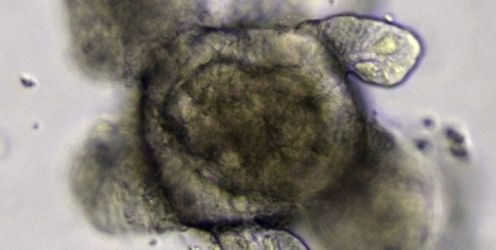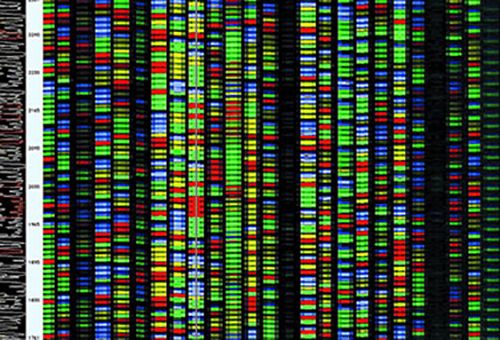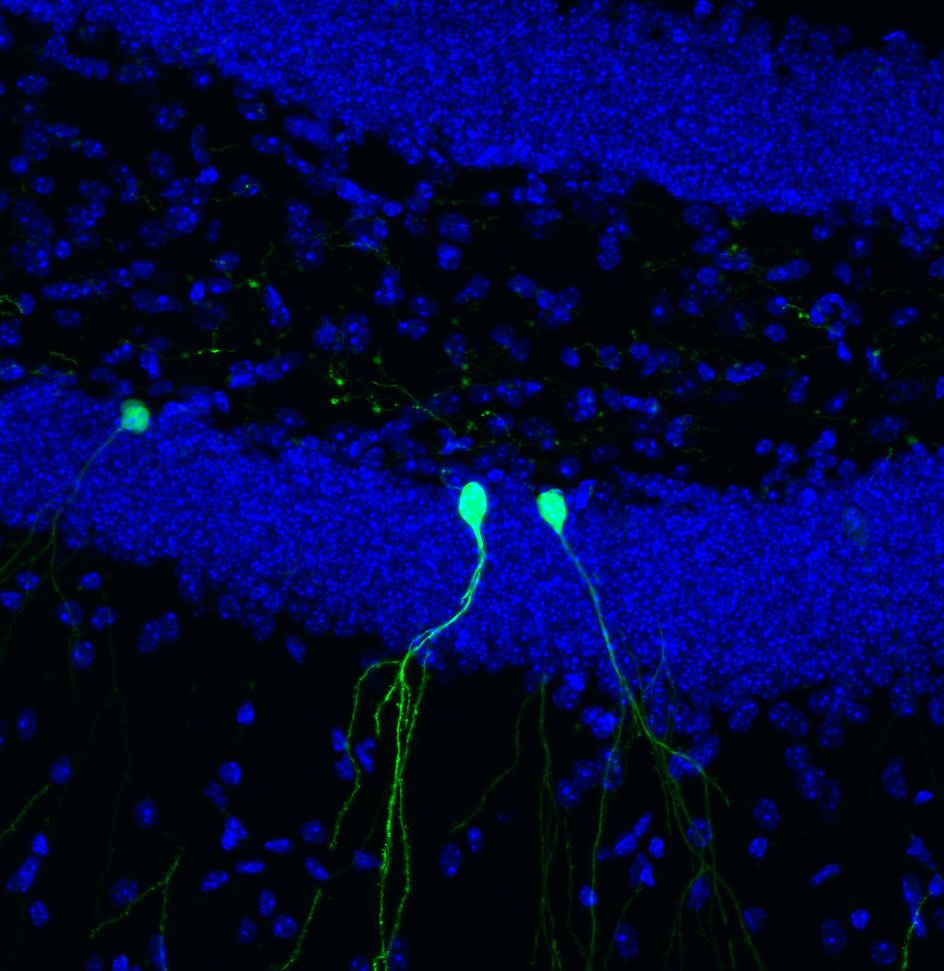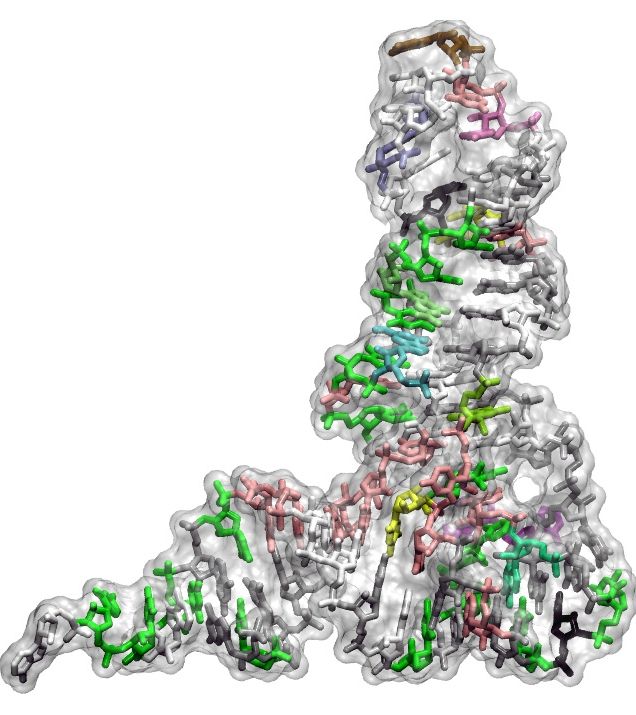Organoids grown from genetically edited stem cells are giving scientists a new tool to screen drugs and test treatments.


New cure for SMA?!
Spinal muscular atrophy (SMA) is a disease that causes progressive degeneration in the nerve cells that control muscles, thereby causing muscle weakness and eventually death. SMA affects approximately 200,000 people in the U.S., often children. Now, researchers at the University of Missouri are studying a subtype of SMA, spinal muscular atrophy with respiratory distress type 1 (SMARD1), and have developed a gene replacement therapy that can be used to treat and control the disease in the future.
SMARD1 is a rare genetic condition with high mortality rate that develops primarily between the ages of six weeks and six months. The condition targets the spinal cord and leads to atrophy of body muscles and paralysis of the diaphragm, which is responsible for breathing. As the disease progresses, children with a SMARD1 diagnosis become paralyzed and require continuous artificial ventilation. The average life expectancy of a child diagnosed with SMARD1 is 13 months. Currently, there is no cure or effective treatment for this disease.
“Monogenic diseases like SMARD1, a disease that is caused by one gene, are ideal for gene therapy since the goal of the therapy is to replace the missing or defective gene,” said Chris Lorson, an investigator in the Bond Life Sciences Center and a professor of veterinary pathobiology. “Our goals for this study were to develop a vector that would improve the outcomes of the disease and for the vector to be effective in a single dose.”

The more da Vinci’s the better, if you ask me!
An international team of scholars has just unveiled plans to science the shit out of Leonardo da Vinci, the man who gave us the Mona Lisa and envisioned futuristic technologies like helicopters and tanks 500 years ago. Goals of the fledgling “Leonardo Project” include recovering the famous Renaissance figure’s remains and reconstructing his genetic code.
The Leonardo Project brings together geneticists, genealogists, archaeologists, and art historians from Italy, Spain, France, the United States and elsewhere. “This is a fabulous, interdisciplinary project,” said Rhonda Roby, a geneticist at the Craig Venter Institute in California, who will be contributing its expertise in genomic reconstruction to the effort.
By examining everything from paintings and notebooks to the DNA of living relatives, the team hopes to glean new insights into Leonardo’s life, diet, physical appearance, and genetic predispositions. If they’re very lucky, the researchers may be able to reconstruct most or all of Leonardo’s genome.

Here is the impact of today’s IBM QC announcement & if proven real then the following will certainly be fasttracked:
1. IBM is now ahead of everyone in QC
2. China & Russia are now going to heat up their own QC efforts.
3. Google and Microsoft will accelerate their efforts to showcase QC in many areas of IoT including AI.
4. Apple will now need to join the QC revolution or face a future of non-existence in the long run because devices, networks & platforms, communications, etc. will now be quick to make the transition.
5. Robotics, genetic research capabilities and other medical technologies, etc. will be drastically advance to levels that we have.

The strength of genome-wide association studies (GWAS) lies in their ability to identify new disease biomarkers through large-scale genomic comparisons of afflicted individuals and unaffected controls. Now, using this powerful technique, an international collaboration of researchers has identified five new gene regions that increase a woman’s risk of developing endometrial cancer—one of the most common cancers to affect women—taking the number of known gene regions associated with the disease to nine.
Endometrial cancer affects the lining of the uterus, typically presenting as an adenocarcinoma. Endometrial cancer is the sixth most common cancer in women worldwide and is the most common cancer of the female reproductive tract in developed countries, with over 320,000 new cases diagnosed in 2012.
Investigators at the University of Cambridge, Oxford University, and QIMR Berghofer Medical Research Institute in Brisbane studied the DNA of over 7000 women with endometrial cancer and 37,000 women without cancer to identify genetic variants that affected a woman’s risk of developing the disease.

The likelihood of giving birth to non-identical twins run in the families, suggests a new study conducted by a team of scientists. The team based their conclusion on the identification of two genetic variants in women who give birth to twins.
A number of factors have previously been linked to why some women give birth to non-identical twins. However, no study ever characterized the properties of the genes the contribute to this outcome.
The latest study looks at the genetic makeup of the mother and explains how mother’s genes can lead to the birth of non-identical twins. During the study, the research team specifically compared the genomes of the non-identical twins’ mothers to look for any common genetic variants between them.
Very cool!
As we age, tiny blood vessels in the brain stiffen and sometimes rupture, causing “microbleeds.” This damage has been associated with neurodegenerative diseases and cognitive decline, but whether the brain can naturally repair itself beyond growing new blood-vessel tissue has been unknown. A zebrafish study published on May 3 in Immunity describes for the first time how white blood cells called macrophages can grab the broken ends of a blood vessel and stick them back together.
“Microbleeding occurs very often in the human brain, particularly in elderly people,” says Lingfei Luo, a developmental geneticist at Southwest University in China. “We believe that this macrophage behavior is the major cellular mechanism to repair ruptures of blood vessels and avoid microbleeding in the brain.”
To simulate a human brain microbleed, Luo and his colleagues shot lasers into the brains of live zebrafish to rupture small blood vessels, creating a clean split in the tissue with two broken ends. Then, the researchers used a specialized microscope to watch what happened next.

The article states that European royal houses are all closely related. Well in humanities history it’s thought that over 80% of all marriages were between second cousins or closer. While until the industrial revolution the nobility would have been the only demographic who could travel further than as far as you can walk from your home and back in a day. So until the industrial revolution the nobility were probably the most genetically diverse demographic.
‘Virgin births’ happen in nature more than we thought, says Frank Swain, so what’s stopping human beings from doing the same?

When tweaking its architecture, the adult brain works like a sculptor—starting with more than it needs so it can carve away the excess to achieve the perfect design. That’s the conclusion of a new study that tracked developing cells in an adult mouse brain in real time.
New brain cells began with a period of overgrowth, sending out a plethora of neuronal branches, before the brain pruned back the connections. The observation, described May 2, 2016 in Nature Neuroscience, suggests that new cells in the adult brain have more in common with those in the embryonic brain than scientists previously thought and could have implications for understanding diseases including autism, intellectual disabilities and schizophrenia.
“We were surprised by the extent of the pruning we saw,” says senior author Rusty Gage, a professor in Salk’s Laboratory of Genetics and holder of the Vi and John Adler Chair for Research on Age-Related Neurodegenerative Disease.

A study performed at IRB Barcelona offers an explanation as to why the genetic code stopped growing 3,000 million years ago. This is attributed to the structure of transfer RNAs—the key molecules in the translation of genes into proteins. The genetic code is limited to 20 amino acids—the building blocks of proteins—the maximum number that prevents systematic mutations, which are fatal for life. The discovery could have applications in synthetic biology.
Nature is constantly evolving—its limits determined only by variations that threaten the viability of species. Research into the origin and expansion of the genetic code are fundamental to explain the evolution of life. In Science Advances, a team of biologists specialised in this field explain a limitation that put the brakes on the further development of the genetic code, which is the universal set of rules that all organisms on Earth use to translate genetic sequences of nucleic acids (DNA and RNA) into the amino acid sequences that comprise the proteins that undertake cell functions.
Headed by ICREA researcher Lluís Ribas de Pouplana at the Institute for Research in Biomedicine (IRB Barcelona) and in collaboration with Fyodor A. Kondrashov, at the Centre for Genomic Regulation (CRG) and Modesto Orozco, from IRB Barcelona, the team of scientists has demonstrated that the genetic code evolved to include a maximum of 20 amino acids and that it was unable to grow further because of a functional limitation of transfer RNAs—the molecules that serve as interpreters between the language of genes and that of proteins. This halt in the increase in the complexity of life happened more than 3,000 million years ago, before the separate evolution of bacteria, eukaryotes and archaebacteria, as all organisms use the same code to produce proteins from genetic information.